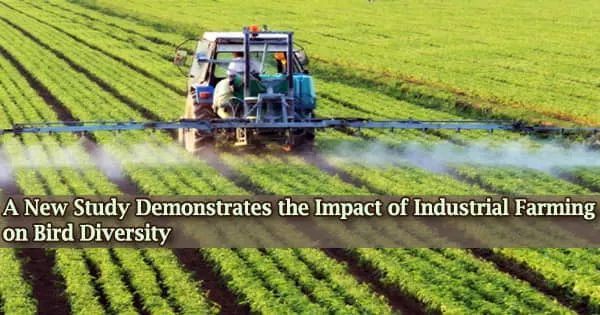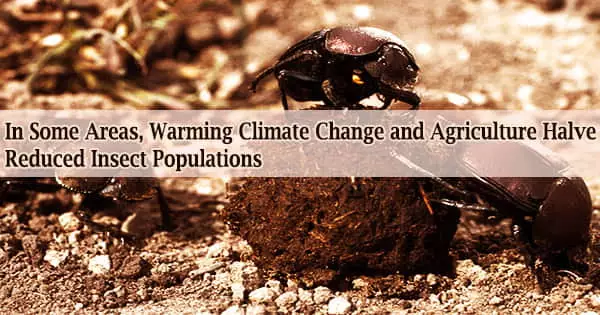Increased farm size causes a reduction in avian diversity, according to a new UBC-led study exploring the implications of large industrial farming on biodiversity.
Industrial agriculture is the large-scale, intense production of crops and animals, which frequently includes the use of chemical fertilizers on crops and the routine, damaging use of antibiotics in livestock (as a way to compensate for filthy conditions, even when the animals are not sick). It could also include genetically engineered crops, extensive pesticide use, and other activities that deplete the environment, abuse animals, and raise pollution.
“Wildlife is a good indicator of a healthy agroecosystem and one thing we wanted to understand was the link between farm size and biodiversity in surrounding areas,” says Frederik Noack, Assistant Professor in the Food and Resource Economics Group, part of UBC’s Faculty of Land and Food Systems.
To further understand this connection, researchers looked at how different farming factors affect the diversity of local birds on fields along Germany’s former Iron Curtain. Increased farm sizes led in a 15% decrease in avian diversity, according to researchers.
Agriculture has experienced “vertical integration,” or the change from small, diverse farms producing a variety of crops and livestock to an industrialized sector dominated by giant multinational corporations, which has accelerated consolidation in recent decades. These businesses prosper as farmers, producers, and their workers lose money, even as the health risks associated with industrial operations rise.
Despite the fact that the former inner-German boundary has lost its political significance since German reunification, farms on the eastern side of the border are still five times larger than those on the western side, owing to the former farm collectivization in East Germany.
Wildlife is a good indicator of a healthy agroecosystem and one thing we wanted to understand was the link between farm size and biodiversity in surrounding areas.
Frederik Noack
Farms in East Germany have been privatized for 30 years, but there are still significant disparities in farm size along the former border. This is an appropriate site for studying the impact of farm size on biodiversity in an otherwise identical ecological and political environment.
Natural pest management and ecosystem upkeep are provided by diversified bird species.
“Surprisingly, we found that larger farms are not damaging themselves, but their typical characteristics tend to harm bird diversity,” Noack explains. “Larger farms have typically larger fields and create more homogenous landscapes with less diverse bird habitats.”
These findings show that preserving various habitats within the agricultural landscape is critical for conserving avian diversity, according to him.
“Providing a mix of different crop type and other land uses such as forests and grassland within the agricultural landscape is crucial for biodiversity conservation and can mitigate the negative impact of agricultural industrialization,” he said.
Their findings, according to Noack, emphasize the need of examining agricultural developments in a landscape context.
To find associations between farm size, crop cover, land cover diversity, and land-use intensity, the researchers employed a biodiversity database and citizen science observations stacked on top of satellite farm photos.
Researchers were able to explore the mechanisms that link farm size to biodiversity by combining geolocalized bird diversity data from systematic bird surveys and opportunistic citizen science data with high-resolution satellite photos.
In order to complete the duties at hand, the factory farming sector is essentially structured to convince individuals to sacrifice all of their best, compassionate sides of themselves.
“The high-resolution land cover data allowed us to characterize the bird habitat for each bird diversity observation including field size, crop type, and land-use intensity. Based on our results we can then provide the information for policies to mitigate the negative impact of agricultural industrialization on biodiversity.”
Agri-environmental policies, according to Noack, are critical in balancing agricultural development with biodiversity conservation goals.
“Our results show that the negative impact of increased farm size can be mitigated by conserving land cover diversity within the agricultural landscape. In practice, this could mean incentivizing riparian buffer strips, forest patches, hedgerows, or agro forestry.”
Other researchers involved include Ashley Larsen, Bren School of Environmental Science & Management, University of California, Santa Barbara; Johannes Kamp, Department of Conservation Biology, University of Göttingen, Germany; and Christian Levers, Department of Environmental Geography, Vrije Universiteit Amsterdam, The Netherlands.
















